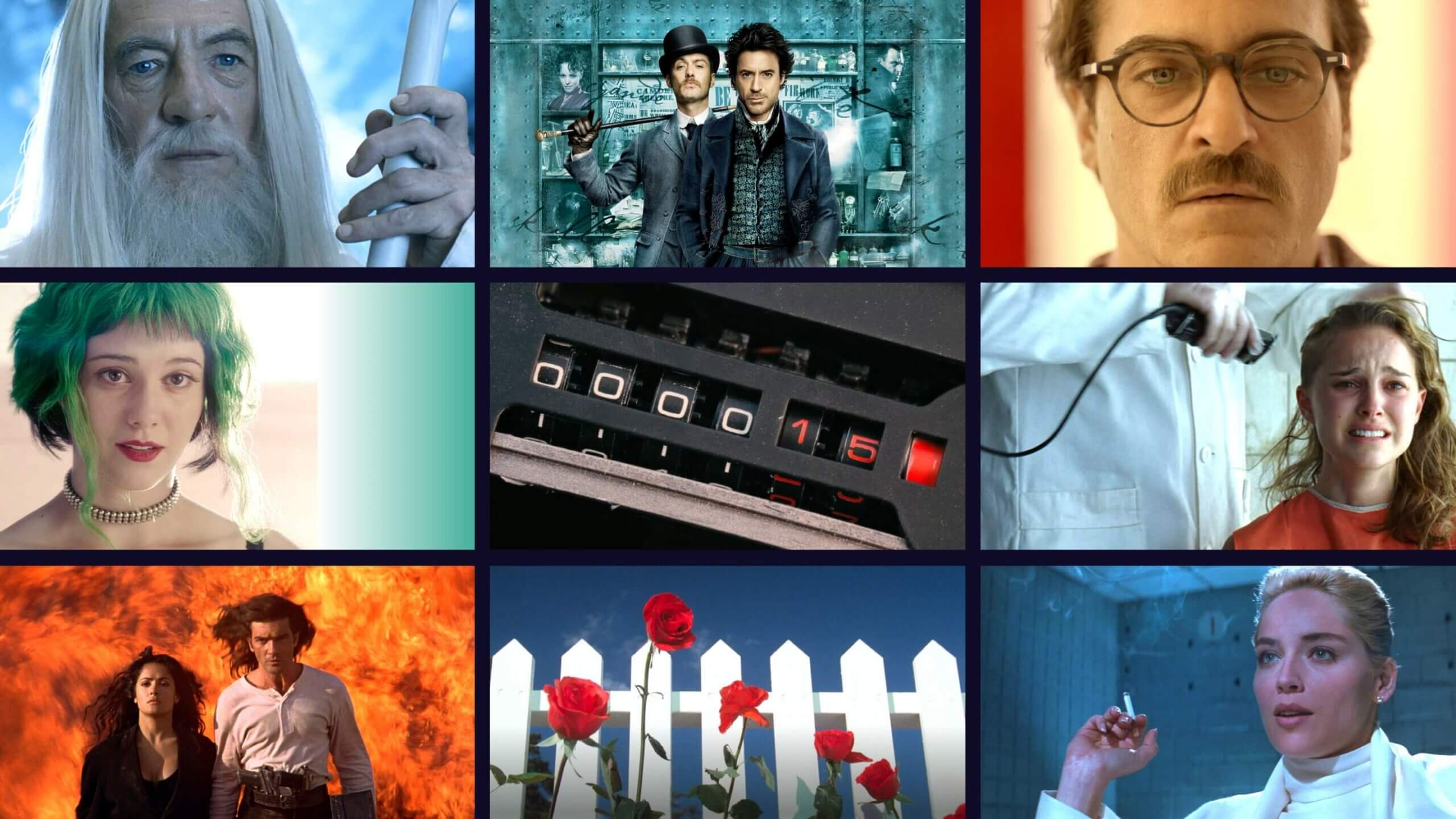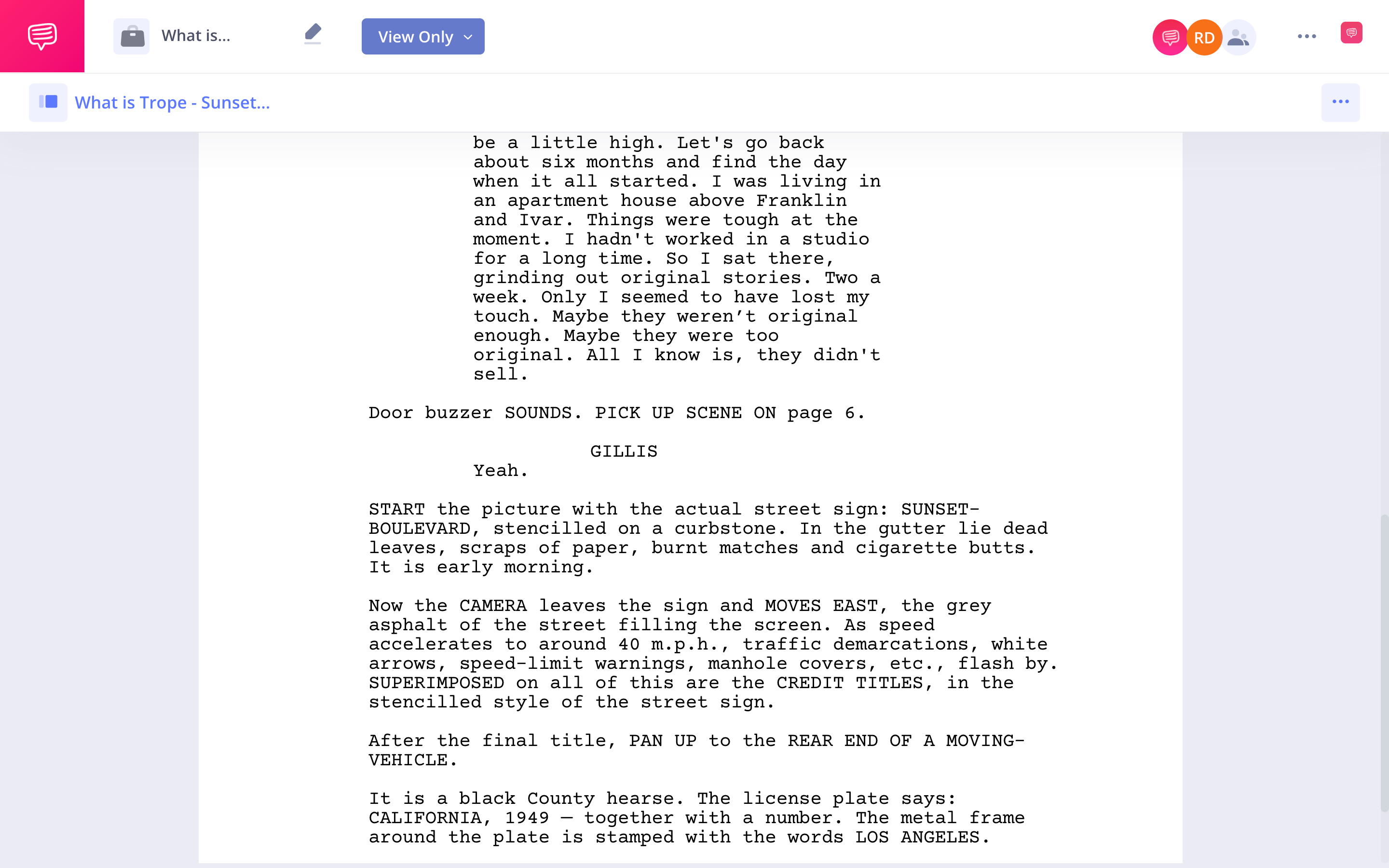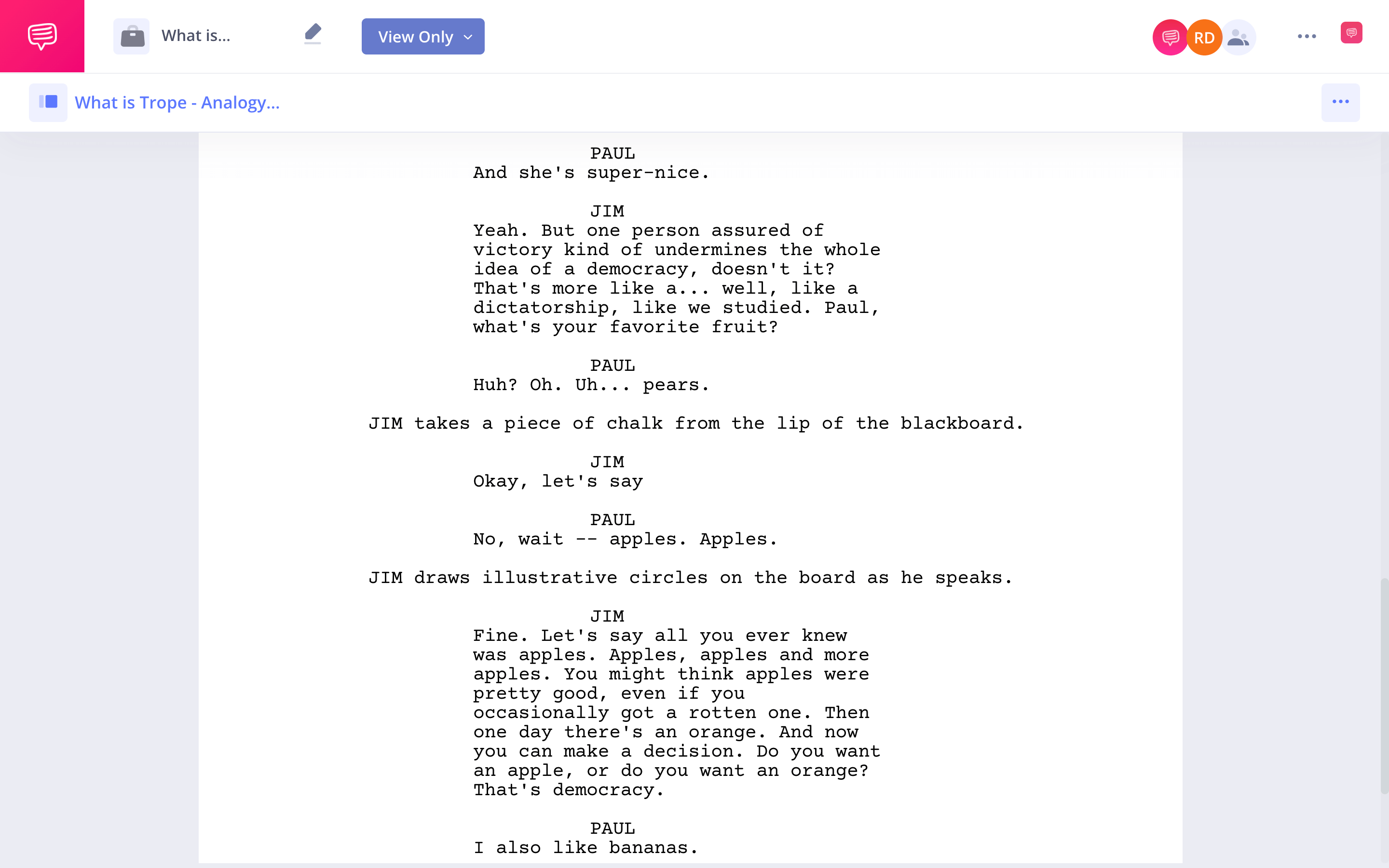What is a trope? How is it different from an idiom or a cliche? In this article, we’re going to break down and define tropes, then show key trope examples from film. By the end, you’ll know how to both recognize and effectively use tropes in your own stories.
Trope MEANING
Don't mix up trope with cliche
Many people define trope with negative connotations, but to do so would be incorrect. The problem is that many common tropes are often confused with cliches.
Again: Any sound and accurate trope definition will define trope simply as a device within a story. It’s only when common tropes are overused, or used poorly, that they become cliches.
Film Trope DEFINITION
What is a Trope?
Film tropes are thematic storytelling devices that communicate something figurative to an audience. They can be something as simple as an object with symbolic meaning or something as complex as an action with referential meaning.
Essentially, film tropes are anything that allude to something other than their literal meaning.
Trope Definition and Examples
Now that we’ve honed in on a trope definition, let’s illustrate it with some trope examples from film history.
Trope Examples
Tropes Examples
Tropes, by definition, are everywhere. That’s not necessarily a bad thing (though, of course, it can be). Let’s look at a few common tropes.
He’s Right Behind Me, Isn’t He?
There are few more eye-roll inducing dialogue tropes than this one. We’ve seen it a million times and its best to avoid it. A character is bad-mouthing someone behind their back, and it turns out that someone is, well, behind their back.
The Femme Fatale
This is a character trope which originated in the 1940s with the rise of the noir. The femme fatale seduces the detective, leading him to his own demise.
A femme fatale doesn’t necessarily mean lazy writing. A character can technically fall into this categorization while still being thoroughly realized.
Amy Dunne from Gone Girl is a great example of this. Writer Gillian Flynn writes Amy with fantastic detail and empathy, and therefore ensures that there is much more to her character than her relationship to her husband.

Amy Dunne, femme fatale
The White Savior
This is one of the more unfortunate character tropes which really can’t be done well. The white savior is a caucasian character who helps a non-white character out of their hard-scrabble circumstances.
This trope isn’t as dated as you’d probably like to think: movies like The Help, The Blind Side, Blood Diamond, and The Great Wall all have white savior protagonists.
A notable subversion of this trope can be found in To Sir, with Love, in which Sidney Poitier plays a Black teacher who works to help a class of underprivileged white students.
The Mirror Scare
Horror movies have a lot of tropes, and this is one of the most common. A character looks in the mirror and boom, some scary entity is standing behind them.
This is a trope which isn’t necessarily bad. Done well, a mirror scare can really startle your horror audience. It’s all about doing it with originality.
Yup, That’s Me
This is a trope which kicks off a movie. You probably know what we’re talking about: a character is in a high-octane or zany situation, and then a voice over comes in saying something along the lines of, “Yup, that’s me. You’re probably wondering how I ended up in this situation.”
So at this point, it would be hard to open a movie using this exact strategy without getting laughed at, but variations on this idea have been used for decades.
Take the opening of Sunset Boulevard, which employs this trope masterfully. We imported the script into StudioBinder’s screenwriting software:
Sunset Boulevard script
The script formatting isn’t what we’d see today, but the trope is here: we are introduced to the character well into the plot of the story, and he comes in with a voice over to explain.
This trope works because it capitalizes on intrigue and disorientation. When we see the dead body, we assume the narrator is omniscient, but it soon becomes clear the narrator is the dead body.
Now, we know the gruesome end to the story, and the rest of the film is all about how we got there. It’s no wonder this script is regarded as one of the greatest ever.
It Was All A Dream
This is the reveal that the plot an audience has been watching was actually a figment of a character’s imagination. This is an extremely difficult trope to pull off for a few reasons.
First, it’s no longer as shocking as it once was, due to overuse. Second, it can make an audience feel cheated– “Wait, I just watched that whole thing for it to just be a dream?”
One effective twist on the trope can be found in Inception. Instead of one dream reveal, the entire movie is a series of reveals, destabilizing the audience’s understanding of what is happening and what’s a dream.
This destabilization results in one of the more memorable endings in pop-culture. Is it all a dream? Or is it real?
We could keep listing tropes forever, but that might be an exercise in diminishing returns. Instead, let’s look at some literary tropes.
Related Posts
Literary Trope Examples
Literary Tropes
While most people today associate tropes with oft-used narrative techniques like the ones we listed above, the term trope also refers to literary devices and figures of speech. Let’s look at a few of them.
Metaphor
This one’s a bear. A metaphor is figurative comparison between two things or ideas. Take the first sentence of this subsection, or “He ran like a cheetah.”
Irony
Irony refers to where reality is the opposite of what we’d expect. Does this feel very general to you? Well, that’s because it is very general.
A phrase can be ironic, like saying “Smart idea” when someone has a bad idea. Or there’s dramatic irony, when the audience has more information than the characters. Say we know a bomb is about to go off in a movie, but none of the characters do. That’s dramatic irony.
Synecdoche
This is where a phrase refers to something through a related concept. This is a literary trope which can be best understood through examples.
Say the Bruins beat the Maple Leaves in a hockey game, and someone describes the game by saying, “Boston won.” This is synecdoche because the city of Boston didn’t win the game, the hockey players on the Bruins did.
Another example: A guy buys a car and tells his friends, “I got a new set of wheels.” He’s referring to the car through a piece of the larger whole.
Analogy
An analogy is similar to a metaphor, comparing two things figuratively. But an analogy uses the comparison to make a larger point. Take this scene from Election:
Election
Here, screenwriters Alexander Payne and Jim Taylor compare democracy to the decision between apples and oranges. Jim (the character) wants to make his point abundantly clear to his class, and using a very rudimentary analogy emphasizes that purpose.
By having Paul completely miss the analogy at the end, Payne and Taylor infuse humor into the scene while illustrating Jim’s impatience with his job (“Exactly.”).
Hyperbole
Hyperbole is exaggeration for emphasis. Take the sentence “Tom didn’t want to go to the bookfair.” We can make this more colorful with hyperbole: “Tom would have rather stuck his head in a guillotine than go to the bookfair.” This isn’t true, but it gets the point across.
MacGuffin Trope Examples
Breaking Down the MacGuffin
A MacGuffin is one of the great movie tropes. This device is a figurative object, question, or person within a story that drives the plot forward, ultimately proving meaningless by the third act.
The secret identity of the title character Mr. Arkadin is the MacGuffin of the film. Although it serves as the driving force through the films first two acts, it proves unimportant by the end.
Many movie tropes of the film noir era are MacGuffins, and The Maltese Falcon is no exception. The statue itself is the MacGuffin of the film as it connects the characters and moves the plot forward. But by the third act, The Maltese Falcon is much more about the characters than the statue.
Western Movie Tropes
The Wild West Showdown
Just because a trope is popular doesn’t mean that it’s a cliche.
The Wild West showdown is one of the most iconic climaxes of all time. The quick-draw, one-shot kill in showdowns is arguably a cliche, but that doesn’t mean the entire premise is cliche. Plenty of directors can use it to subvert our expectations in new and exciting ways.
In the sci-fi television show The Expanse, two characters have a showdown in space. It’s set up exactly like the cliched climax we’ve come to expect, but something essential makes it different.
The context of the scene parallels the new frontier of intergalactic travel to that of the wild west. This is one of those trope examples that shows how a device is transformed by its figurative setting: The ensuing showdown affirms the cliche, but applies it in a new way.
Related Posts
Trope Examples
Two characters overcome differences
One oft-used trope looks like this: two characters are forced to work together despite their differences. But what is a trope’s tipping point — the point at which it devolves into cliche?
If, like so many films throughout history, the two characters initially undergo some period of drama but end up as best friends, that’s probably a sign that the trope is now a cliche. But there are also some great examples of how character tropes are used to subvert that pattern of expectation.
The two characters who are forced to work together in Touch of Evil could not get along worse than they do. Rather than strive toward the same goal, Quinlan (Orson Welles) and Vargas (Charlton Heston) do everything to stop one another.
To avoid turning character tropes into cliches, you might consider taking a comedic approach to your story.
The Other Guys’ character tropes do exactly that — pitting cops Gamble (Will Ferrell) and Hoitz (Mark Wahlberg) against one another while still pushing them toward the same shared goal. The film’s character tropes subvert cliche by exaggerating the tension we come to expect from two people who don’t initially get along.
Difference Between Tropes & Cliches
Trope vs cliche
Still confused? Here’s another simple way to think about trope vs cliche.
Movie tropes are general objects, people, or situations with figurative meaning. They can be used effectively in scripts by subverting or exaggerating a presumed cliche.
Cliches are something that we expect to happen.
As you write, it may help to ask yourself about these key differences so you can find your own way of using a trope to subvert cliche.
What is a trope?
A character in your film is stalked by a zombie.
What is a cliche?
When the character in your film is caught by a zombie, the zombie eats his brains.
How can the trope subvert the cliche?
When the character in your film is caught by a zombie, the zombie gives him his wallet, which fell out of his pocket.
Understanding the fundamental differences between tropes and cliches will open up a whole world of creative possibilities.
Related Posts
Up Next
Know your cliches
We’ve talked about what makes tropes and cliches different. Up next, we’ll define what a cliche is by looking at some specific movie examples. By the end, you’ll be an expert on catching them so they won’t infect your script.



